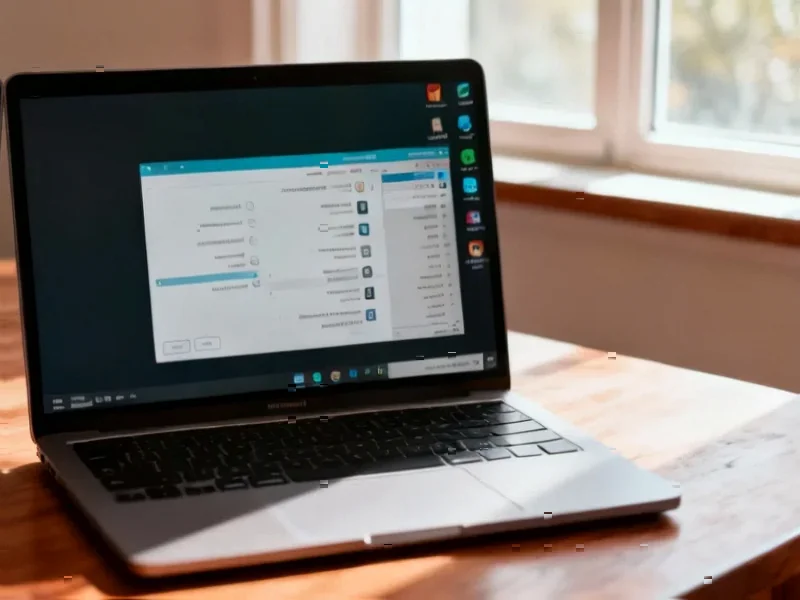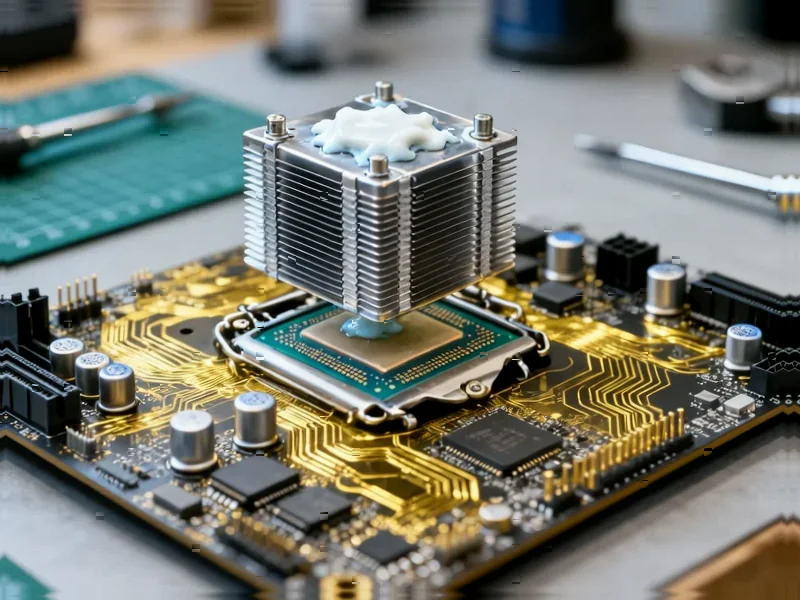According to TheRegister.com, System76’s COSMIC desktop environment version 1.0 will officially launch alongside Pop!_OS 24.04 LTS on December 11, 2024. The Rust-based desktop, presented by CEO Carl Richell and developer Victoria Brekenfeld at the Ubuntu Summit, features composable components allowing users to customize panels, docks, and layouts while supporting vendor branding. Key features include COSMIC Sync for encrypted system settings synchronization across devices and advanced workspace management, though HDR support and animation reduction remain for future updates. The desktop is already available in Fedora and Arch distributions, marking System76’s expansion beyond its hardware ecosystem.
From Hardware Vendor to Platform Provider
System76’s investment in COSMIC represents a fundamental strategic shift from hardware manufacturing to platform development. By building a desktop environment that works across multiple Linux distributions, the company is reducing its dependency on hardware sales while creating new revenue streams through services like COSMIC Sync. This mirrors successful transitions seen in companies like Red Hat, where platform control creates sustainable business models beyond one-time hardware purchases. The Ubuntu Summit presentation emphasized this platform approach, positioning COSMIC as infrastructure rather than just another desktop environment.
The Rust Programming Language Advantage
System76’s choice of Rust for COSMIC development isn’t just technical—it’s strategic. Rust’s memory safety features and performance characteristics position COSMIC as a more secure and reliable alternative to C++-based competitors. This technical foundation could become a significant market differentiator, especially for enterprise customers concerned about security and stability. The development insights shared by Victoria Brekenfeld highlight how Rust’s modern tooling enables faster iteration and more robust code, potentially reducing long-term maintenance costs compared to legacy desktop environments.
COSMIC Sync as Revenue Engine
The introduction of COSMIC Sync represents System76’s most direct path to recurring revenue. By offering encrypted synchronization of settings, applications, and even Git repositories across devices, System76 enters the competitive but lucrative sync services market. The “zero knowledge” architecture means they can’t access user data, addressing privacy concerns that have hampered adoption of similar services. This positions COSMIC Sync as a potential subscription service that could generate steady income independent of hardware sales. The atomic sync capability, where incomplete synchronizations roll back completely, provides enterprise-grade reliability that could justify premium pricing.
Linux Desktop Market Consolidation Opportunity
System76 is entering a fragmented Linux desktop market ripe for consolidation. With numerous desktop environments competing for limited developer attention and user adoption, COSMIC’s modern architecture and corporate backing position it as a potential standard-bearer. The company’s demonstration videos show capabilities that surpass many established environments, particularly in multi-monitor setups where GNOME struggles. As organizations seek standardized Linux deployments, COSMIC’s vendor branding support and consistent performance could make it an attractive option for enterprise adoption, potentially capturing market share from aging competitors.
Hardware-Software Integration Strategy
While expanding beyond hardware, System76 maintains strategic hardware integration. The company’s workstation designs, featuring magnetically attached panels and modern component layouts, provide a premium experience when combined with COSMIC. This creates a compelling ecosystem where hardware and software reinforce each other’s value proposition. Customers who appreciate System76’s hardware engineering may adopt COSMIC on other systems, while COSMIC users might choose System76 hardware for optimal integration. This ecosystem approach mirrors Apple’s successful hardware-software integration while maintaining the openness that defines the Linux ecosystem.
Navigating the Competitive Landscape
System76 faces significant competition from established players and emerging alternatives. Canonical’s Ubuntu, Red Hat’s workstation offerings, and various community-driven projects all compete for the same user base. However, COSMIC’s technical demonstrations show unique advantages in customization and performance that could attract power users and developers. The company’s challenge will be building sufficient market share to sustain development while avoiding the fragmentation that has limited other desktop environment projects. Their corporate backing provides an advantage over purely community-driven alternatives, potentially enabling faster feature development and better support.
Strategic Outlook and Market Impact
The December 11 launch represents just the beginning of System76’s platform strategy. Future developments, including HDR support and enhanced accessibility features, will determine whether COSMIC can achieve mainstream adoption beyond the Pop!_OS user base. The potential for an official Ubuntu flavor with COSMIC, mentioned in the reporting, could dramatically expand its reach. As organizations increasingly consider Linux for desktop deployments, COSMIC’s modern architecture and corporate support position it as a credible alternative to both Windows/macOS and other Linux environments. System76’s success will depend on execution quality and their ability to build a sustainable ecosystem around the COSMIC platform.




